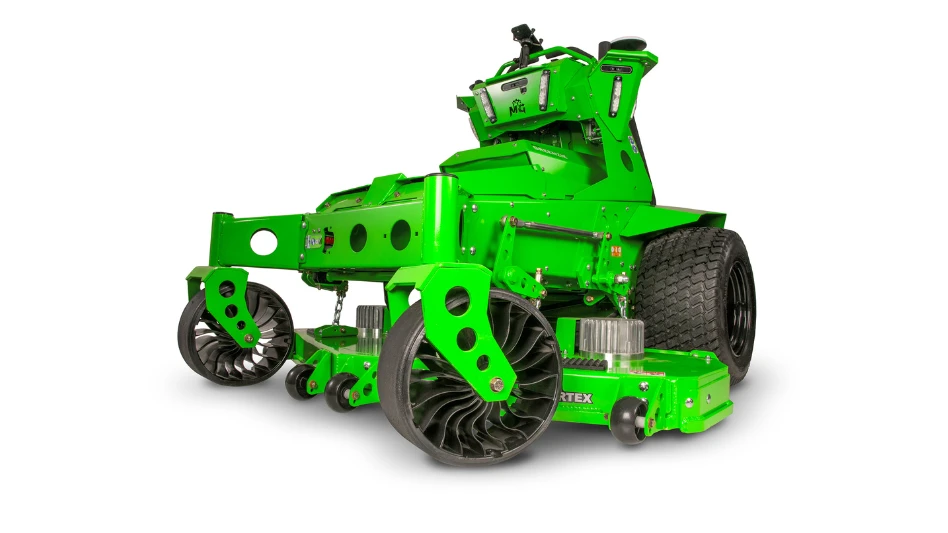Weather extremes almost always result in more business; yet it can throw curve balls too. Based on last season and winter patterns, researchers in the regions below share some insight into what this year may bring.
Northeast: Last season was a particularly easy year for turf managers in the NE. The fall growing season for turfgrass was favorable, so repair and recovery of damaged lawns should have been successful, says Richard Buckley, Ph.D., Rutgers University. A relatively warm winter followed, with plenty of precipitation. If it continues, early emergence of some insect pests – chinch bugs/billbugs – are expected. Consider earlier application of preemergent herbicides. It’s not too late to soil test so nutrient levels and pH can be adjusted during the season.
Pay particular attention to nitrogen input. Grass that never went dormant last year, and was actively growing into the winter may need an extra shot of nitrogen. Under-fertilized turfgrass is more susceptible to dollar spot and red thread diseases.
In the landscape, warmer winters usually increase the incidence of mite activity. Spruce spider mites and hemlock rust mites were active in the fall and more are expected on susceptible coniferous hosts this spring.
Midwest: With uneven rainfall patterns throughout much of Southern Ohio into parts of Indiana and Kentucky, many lawns were severely damaged by drought, says Joe Rimelspach, The Ohio State University Extension. As a result, summer seed work was never successfully completed resulting in thin turf prone to weed pressure. It will be a challenge to complete spring renovation work before crabgrass, foxtail and broadleaves set in. Likewise, seeding and patch-up work will likely result in diseases such as gray leaf spot which is a killer to perennial rye. On the ornamental front, evergreens – particularly hedges and arborvitaes – are collapsing from drought stress. Shade and ornamental trees will show losses this year and for years to come. The trees are so weak they’re susceptible to pests such as bag worms, mites and caterpillar feeders, and diseases such as cankers, scab and anthracnose depend on the temperature and moisture in the spring. Root decline and root rot is also a concern especially if a wet spring ensues.
Southeast: In areas of the SE, the persistent drought is at the center of all current turf management decisions and programs, according to Rick Brandenburg, Ph.D, North Carolina State University. Areas from Raleigh to Charlotte, N.C., to Atlanta and to Birmingham represent some of the hardest hit regions. Fall seeding was delayed and spring seeding looks questionable. Water restrictions threaten both hand watering and drip irrigation which has serious implications for lawn care as well, particularly if products require watering in following application. The stage is set for numerous challenges unless weather patterns change dramatically this fall. Expect problems with Southern chinch bugs on St. Augustinegrass, and if grubs and mole crickets survive, controlling them is going to be more difficult under dry conditions. In dry soils, most insect pests reside deeper and make control more challenging. Dry weather may also make armyworm problems more severe. Weed and disease control will also be challenging under these conditions.
West: Southern California is currently experiencing close to normal weather conditions, while the Pacific NW is wetter, according to Leonard Burkhart, Ph.D, technical adviser for The Davey Tree Expert Co. If heavy precipitation continues through the spring, brown rot on cherries and more foliar-type turf diseases will be prevalent. Of concern in the West is the expansion of exotic and invasive pests. Root weevil (Diaprepes), similar to black vine weevil but more eager, and Thrips Myoporum, making this low maintenance landscape plant not worth planting, are two new pests challenges. Professionals in the West are trying to keep the Japanese beetle from establishing there, and are keeping an eye on the Eucalyptus tortus beetle in Southwest Nevada and Arizona. Other invasive pests to watch are: erythrina (coral tree) gall wasp currently in Mexico but not too far from SW California; light brown apple moth in the San Francisco bay area; pink hibiscus mealy bug in Southern California; and cycad scale before it wipes out the sago palms.
-Sponsored by Syngenta

Explore the March 2008 Issue
Check out more from this issue and find your next story to read.
Latest from Lawn & Landscape
- Connect, Control & Conserve with Horizon Technical Services
- Use Horizon's Parts Hotline
- How I built a Top 100 company
- Horizon’s Exclusive TurfGro Fertilizer
- Grow your business with mosquito control
- LandCare adds 2 branches in SoCal, promotes Aleman to branch manager
- Spray them away
- PERC helps debut propane direct-injection fuel system at ACT Expo 2025





